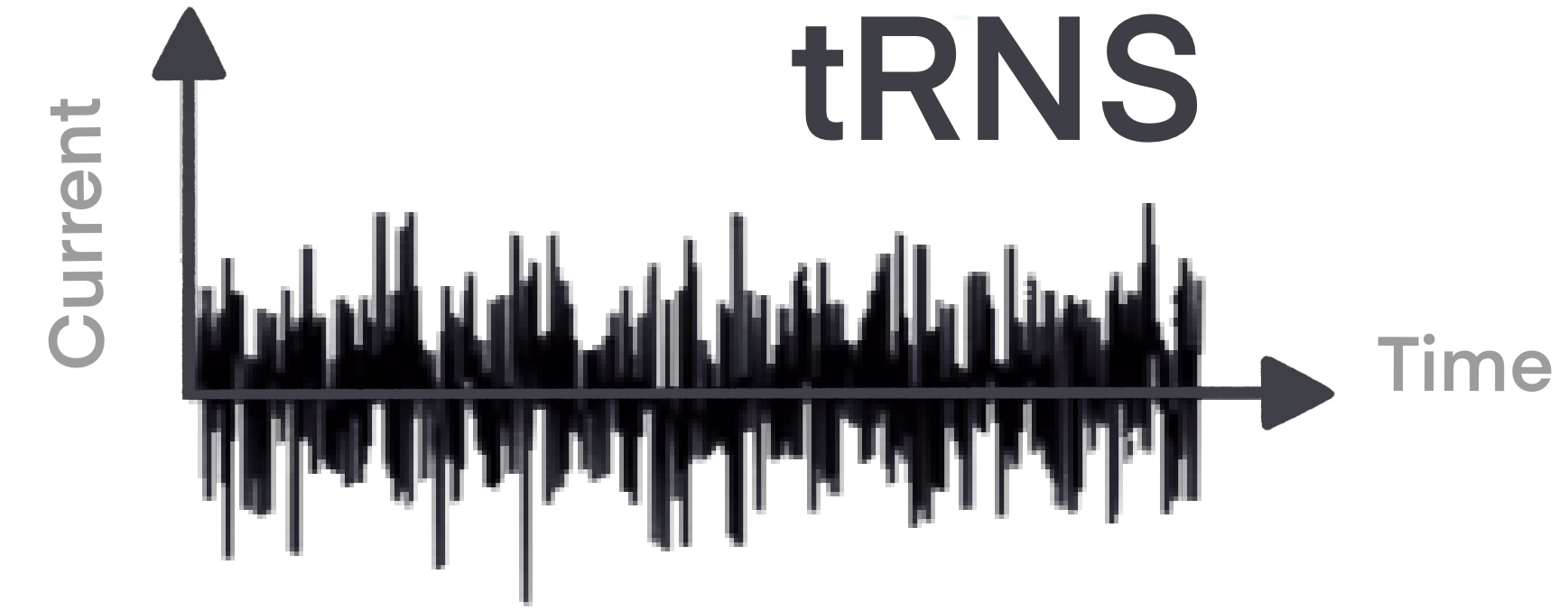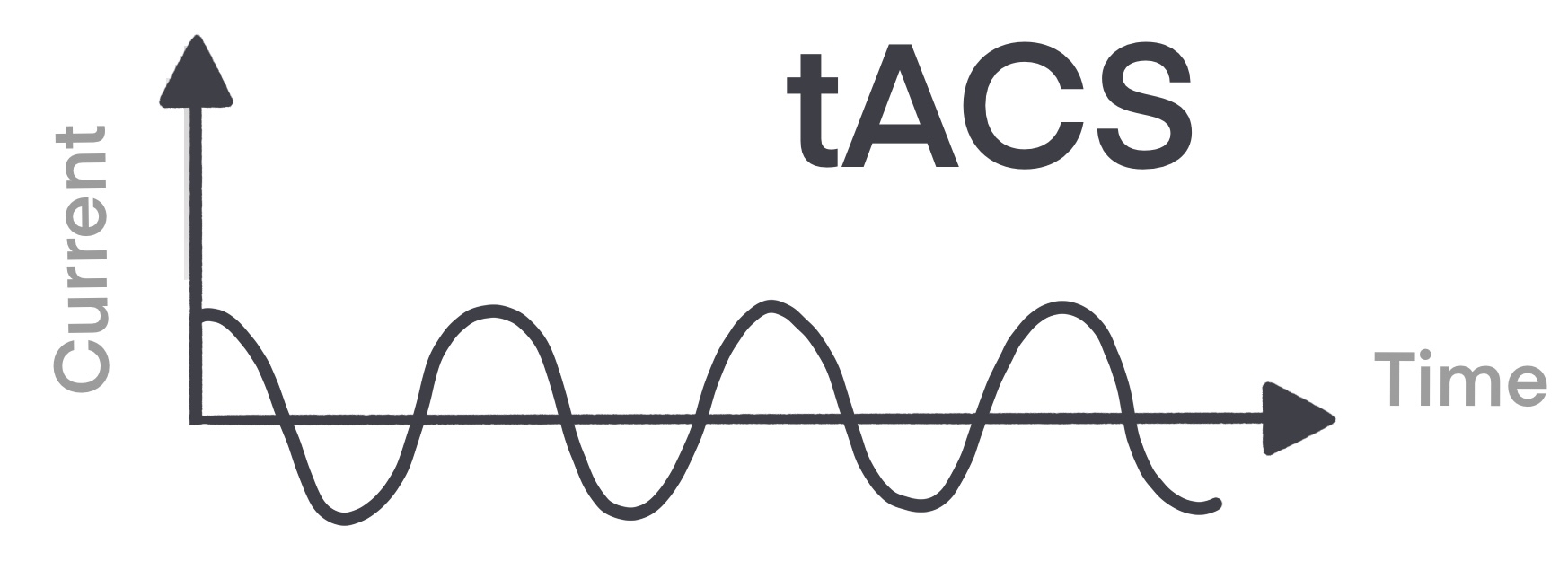Transcranial Random Noise Stimulation (tRNS)
This method of stimulation is used to break up hypercoherence in the brain. Hypercoherence is when parts of the brain are too synchronized and repetitive. tRNS helps to break up this repetition, and is highly effective in the treatment of things such as Tinnitus (a ringing in the ears). tRNS works by giving random frequencies between anode and cathode to help break up the hypercoherence.


Transcranial Direct Current Stimulation (tDCS)
tDCS is exactly what it sounds like: a one way electrical current driven from one point to another on the brain or another part of the body. The current is streamed from anode (the positive electrode) to cathode (the negative electrode) and can be used to treat a variety of conditions as it creates a surge of calcium and sodium ions in the brain. As a result of this surge in ions, the brain becomes more receptive to Neurofeedback and pEMF.
Transcranial Alternating Current Stimulation (tACS)
tACS is where a current continuously switches back and forth from anode to cathode. Where tDCS is a constant direct current from one electrode to another, tACS requires that that current change directions so that each electrode both gives and receives the electrical current much like a ping pong match.
